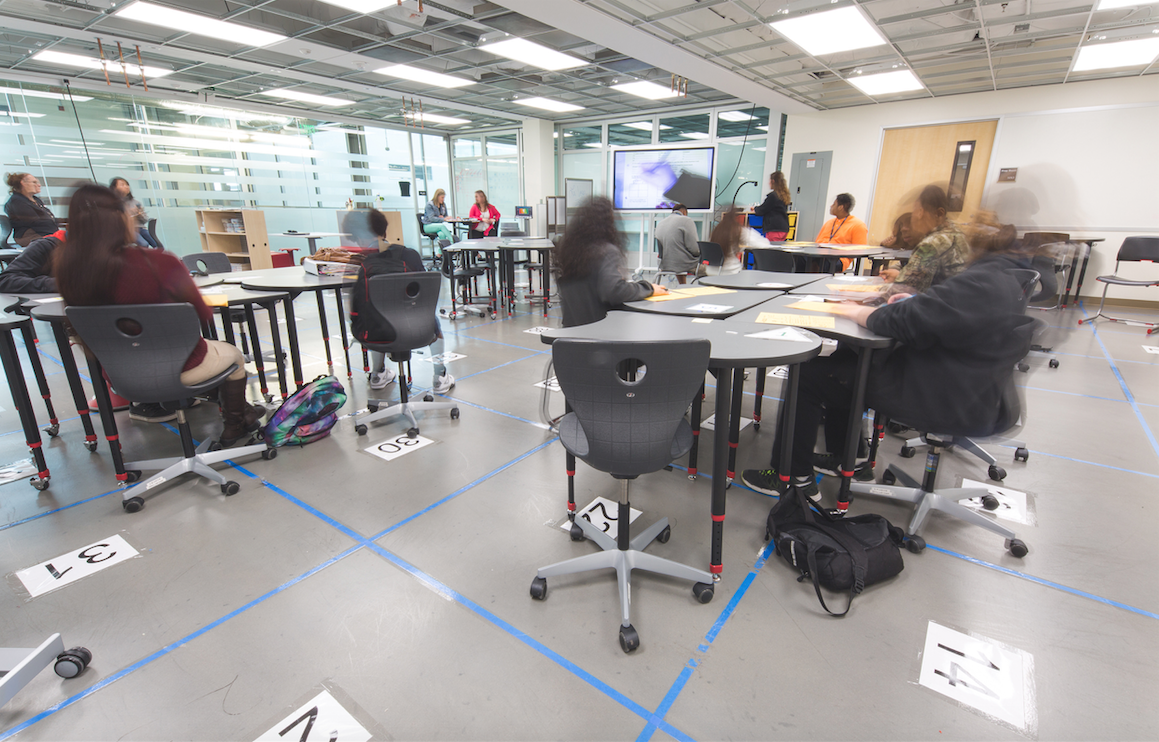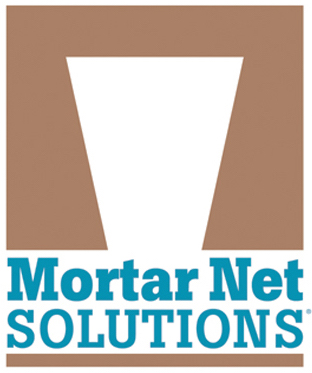At a prototype classroom on the campus of Baylor University, in Waco, Texas, school officials and teachers experiment with new types of furniture, workgroup configurations, projectors, writing boards, and mobile technology to test new teaching methods and classroom layouts.
TOP 100 K-12 SCHOOL ARCHITECTURE FIRMS
Rank, Firm, 2015 Revenue
1. DLR Group $66,300,000
2. Stantec $64,964,601
3. Huckabee $60,544,770
4. PBK $55,230,000
5. Wold Architects and Engineers $26,600,000
6. NAC Architecture $24,647,620
7. HMC Architects $24,031,965
8. Perkins+Will $19,790,000
9. LPA $19,662,221
10. Fanning/Howey Associates $18,915,132
TOP 60 K-12 SCHOOL ENGINEERING FIRMS
Rank, Firm, 2015 Revenue
1. AECOM $50,000,000
2. Jacobs $47,790,000
3. STV $10,618,628
4. KJWW/TTG $9,576,078
5. Wendel $6,321,646
6. Loring Consulting Engineers $6,000,000
7. SSOE Group $5,830,000
8. Dewberry $5,245,499
9. KCI Technologies $5,000,000
10. M/E Engineering $4,688,355
TOP 80 K-12 SCHOOL CONSTRUCTION FIRMS
Rank, Firm, 2015 Revenue
1. Gilbane Building Co. $480,004,000
2. Balfour Beatty US $461,785,038
3. Core Construction Group $421,279,721
4. Turner Construction Co. $404,115,437
5. Skanska USA $214,070,248
6. Kraus-Anderson $203,000,000
7. Shawmut Design and Construction $191,000,000
8. Barton Malow Co. $181,481,875
9. Adolfson & Peterson Construction $168,810,000
10. JE Dunn Construction $157,937,145
K-12 GIANTS SPONSORED BY:
Opened in 2015, the Learning Experience Laboratories (LEx Labs), created by design firm Huckabee, a local educational service center, and Baylor, is a microcosm reflecting nationwide trends.
The lab is a kind of flight simulator where educators experiment in ways that address forces in the corporate world and trends in technology influencing K-12 education. New styles of working—more collaborative and project-based—and mobile technology are changing how people work. The K-12 education sector is responding to those trends.
The need to revamp schools to keep up with the times adds urgency to planning and funding decisions. K-12 construction put in place declined to $12.9 billion in 2015, from $14 billion in 2014, according to School Planning & Management, so school districts have had to upgrade their physical plants with fewer resources.
Educators visiting LEx Labs frequently want to try out new concepts in furniture. Later, they discover that the space promotes the reevaluation of teaching methods. “There’s been a growing trend where the built environment has been influencing professional development,” says Kerri Ranney, AIA, Huckabee’s Director of Learning and Strategic Development. “We now are at a tipping point.”
She admits there is great variability in how quickly schools are changing. “Some clients are willing to jump far ahead in changing the pedagogy and learning environment,” Ranney says. “Others just move a couple of ticks.”
The impact on design of mobile computing devices, movable furniture, team teaching styles, and more collaborative project work means most architects are creating classrooms far different from the ones in which they were educated. When a radical concept arises it helps to visualize what the alternatives could be in a mock environment like LEx Labs.
Design firms must also help educate parents and taxpayers about new learning spaces. Building support for new projects is more important than ever, says Roger Smith, AIA, LEED AP, Principal, BBS Architects & Engineers. “Parents know a lot about their kids’ education. Their expectations are bigger, and they’re more involved,” Smith says.
To generate funding support for major new projects, school districts often mix in amenities that can be used by the whole community. These features include old standbys such as athletic fields, gymnasiums, and auditoriums, but with new twists. KSS Architects designed a combination facility that is best described as an auditorium with a gym built into it for Gottesman RTW Academy, a private school in northern New Jersey.
“They wanted the space to look like an auditorium, not like a gym,” says Merilee Meacock, AIA, LEED AP, Partner, KSS Architects. “A higher-end aesthetic was important. They wanted to display their identity such that performance was a higher priority than athletics.” An accent wall/proscenium/cloud ceiling creates a room-within-a-room effect. Resilient and durable materials ensured that the space would hold up to gym use.
The Jewish day school uses the space for high-holiday services, so the room had to look the part. This adaption helped generate financial support for the newly constructed school.
KSS’s design also had a strong narrative based on a Hebrew phrase meaning “heal the earth” to relate to stakeholders. The building was integrated within the natural contours of the hilly, wooded site. Retaining walls were built with rock blasted from the site during construction.
A garden and greenhouse provide for site-grown food. Students help tend to the gardens and sometimes help cook what they’ve grown. “They can see the life cycle of growing and cooking food,” Meacock says. Composting bins and rain barrels boost the environmental credibility.
The ecological angle was “a narrative people could visualize and understand,” Meacock says.
MAKING SPACES WORK TWICE AS HARD
Space flexibility is critical to classroom design. Spaces have to be adaptable, even allowing for drastic changes such as, say, a doubling of classroom size. Meacock recommends that walls separating classrooms should not be load bearing. Shared spaces must also be able to accommodate multiple uses. The tables in the dining hall at the Gottesman school can be removed so that the space can be used for science lab projects.
More than ever, designers must consider the furnishings during the earliest stages of a project. “If every kid has a tablet, where will we put the tablet cart?” asks Kevin J. Walsh, AIA, LEED AP, BBS’s Lead Designer. Spaces that allow for multiple furnishing configurations will be most adaptable.
K-12 design and construction firm leaders know they must keep close tabs on trends in primary and secondary education during this time of great flux. Who can predict with 100% accuracy how new generations of technology will influence teaching and learning? Where there is uncertainty over pedagogy, there must be a proportional amount of flexibility built into the design. Firms that connect best with educators tapped into influential trends will have a distinct advantage in this market.
RETURN TO THE GIANTS 300 LANDING PAGE
Related Stories
Hotel Facilities | Mar 30, 2016
The Usonian Inn, a Frank Lloyd Wright-inspired motor lodge, is on the market for $665,000
The Usonian Inn proudly displays many Wright-inspired characteristics, the most prominent of which is the use of cantilevered overhangs.
Designers | Mar 30, 2016
A technical pen for the modern age
Morpholio’s new ScalePen feature dynamically sets line weight depending on the scale or zoom level of the drawing.
Architects | Mar 29, 2016
Why drawing remains relevant in the design process
Hand-drawn concepts allow ideas to emerge and build stronger connections between the design and the audience, as Gensler Principal and Design Director Alex Fernández writes.
Education Facilities | Mar 28, 2016
Steven Holl wins invited competition to design Rubenstein Commons
The new Rubenstein Commons will be a 20,000-sf structure at the center of the campus for the Institute for Advanced Study in Princeton, N.J.
Wood | Mar 28, 2016
Waugh Thistleton designs one of the tallest timber office buildings in London
The nine-story Development House has vertical open spaces for light and air flow.
Architects | Mar 20, 2016
Ars Gratia Artis: A North Carolina architect emphasizes the value of art in its designs
Turan Duda says clients are receptive, but the art must still be integral to the building’s overall vision.
Architects | Mar 16, 2016
PGAL acquires Dallas-based Pro Forma Architecture
The merger adds a firm that has specialized in municipal projects.
Events Facilities | Mar 15, 2016
Bjarke Ingels, Foster+Partners, and Grimshaw all winners in Expo 2020 pavilion design competition
BIG designed the Opportunity Pavilion, Foster+Partners submitted the winning Mobility Pavilion, and Grimshaw created the Sustainability Pavilion.
Sports and Recreational Facilities | Mar 14, 2016
Washington Redskins tease new stadium model designed by Bjarke Ingels
The location isn't yet determined, but the new stadium will have a moat for kayaking.
Architects | Mar 11, 2016
German artist recreates Brutalist buildings with LEGO blocks
Arndt Schlaudraff brings the beauty out of the rugged, linear style of buildings most popular a half century ago.















